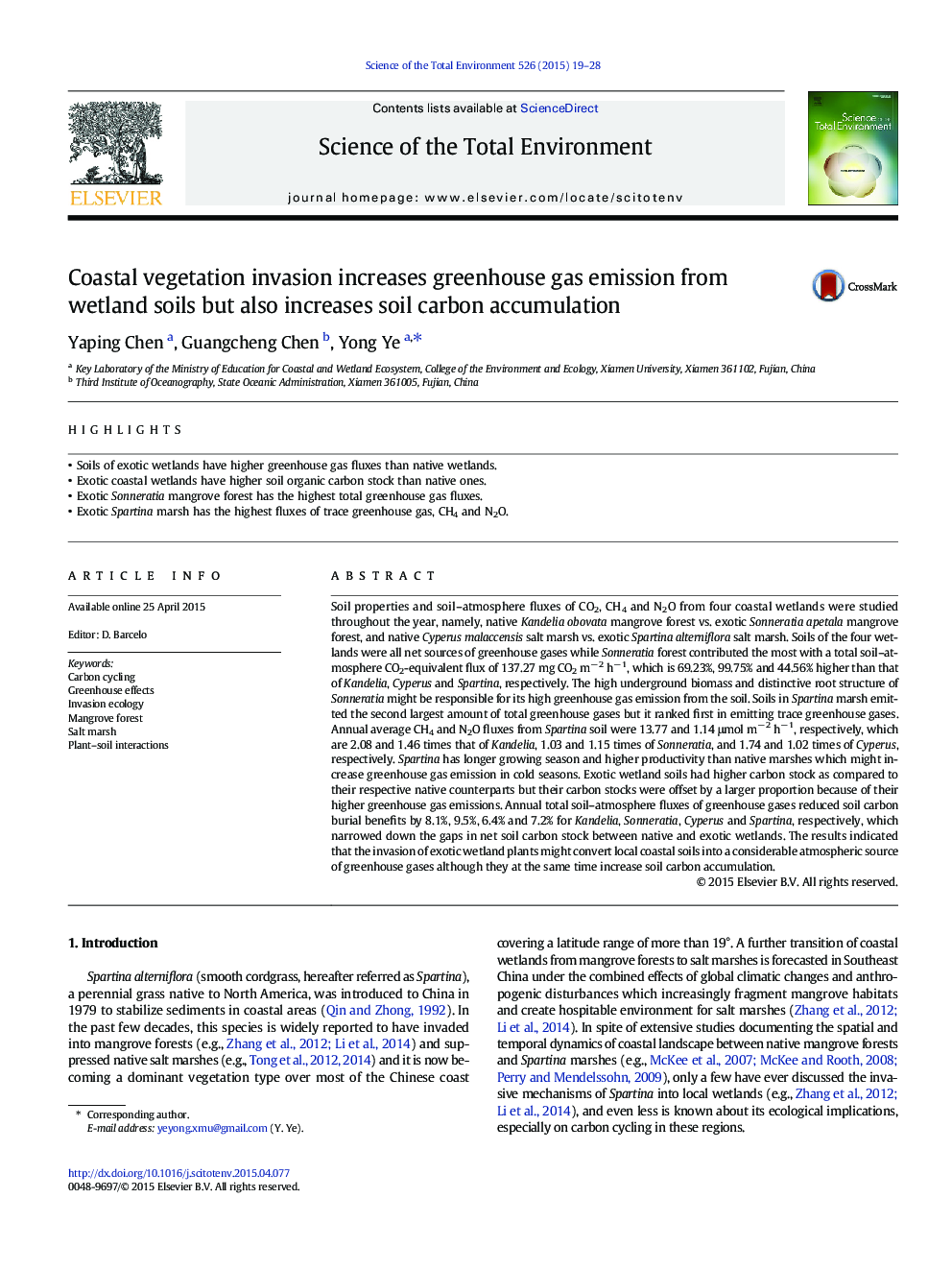| کد مقاله | کد نشریه | سال انتشار | مقاله انگلیسی | نسخه تمام متن |
|---|---|---|---|---|
| 4428351 | 1619756 | 2015 | 10 صفحه PDF | دانلود رایگان |
• Soils of exotic wetlands have higher greenhouse gas fluxes than native wetlands.
• Exotic coastal wetlands have higher soil organic carbon stock than native ones.
• Exotic Sonneratia mangrove forest has the highest total greenhouse gas fluxes.
• Exotic Spartina marsh has the highest fluxes of trace greenhouse gas, CH4 and N2O.
Soil properties and soil–atmosphere fluxes of CO2, CH4 and N2O from four coastal wetlands were studied throughout the year, namely, native Kandelia obovata mangrove forest vs. exotic Sonneratia apetala mangrove forest, and native Cyperus malaccensis salt marsh vs. exotic Spartina alterniflora salt marsh. Soils of the four wetlands were all net sources of greenhouse gases while Sonneratia forest contributed the most with a total soil–atmosphere CO2-equivalent flux of 137.27 mg CO2 m− 2 h− 1, which is 69.23%, 99.75% and 44.56% higher than that of Kandelia, Cyperus and Spartina, respectively. The high underground biomass and distinctive root structure of Sonneratia might be responsible for its high greenhouse gas emission from the soil. Soils in Spartina marsh emitted the second largest amount of total greenhouse gases but it ranked first in emitting trace greenhouse gases. Annual average CH4 and N2O fluxes from Spartina soil were 13.77 and 1.14 μmol m− 2 h− 1, respectively, which are 2.08 and 1.46 times that of Kandelia, 1.03 and 1.15 times of Sonneratia, and 1.74 and 1.02 times of Cyperus, respectively. Spartina has longer growing season and higher productivity than native marshes which might increase greenhouse gas emission in cold seasons. Exotic wetland soils had higher carbon stock as compared to their respective native counterparts but their carbon stocks were offset by a larger proportion because of their higher greenhouse gas emissions. Annual total soil–atmosphere fluxes of greenhouse gases reduced soil carbon burial benefits by 8.1%, 9.5%, 6.4% and 7.2% for Kandelia, Sonneratia, Cyperus and Spartina, respectively, which narrowed down the gaps in net soil carbon stock between native and exotic wetlands. The results indicated that the invasion of exotic wetland plants might convert local coastal soils into a considerable atmospheric source of greenhouse gases although they at the same time increase soil carbon accumulation.
Journal: Science of The Total Environment - Volume 526, 1 September 2015, Pages 19–28
